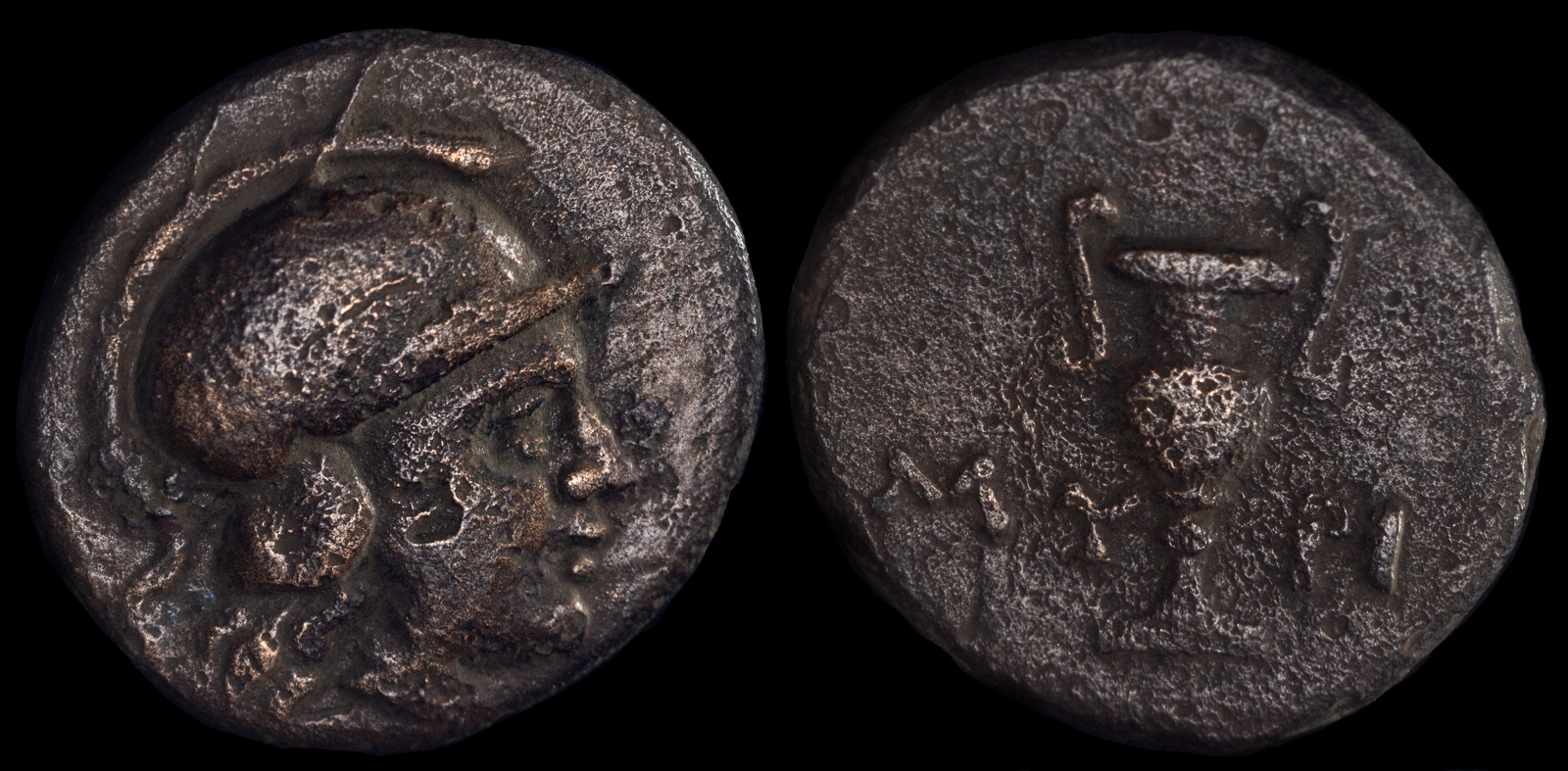
4th century BCE
Æ 17mm, 3.71g, 12h
Helmeted head of Athena r. R/ Amphora; lyre to r.
SNG Copenhagen 225
Per Strabo, Myrina was named after an Amazon of the same name, meaning ‘much-bounding’ from the speed of her chariot. He also states that it was already populated before the Trojan War.

circa 400-200 BCE
Æ 13mm, 1,56g
Obv: Helmeted head of Athena righ
Rev: MY – PI, Amphora
SNG München 570; SNG Ref: Copenhagen 216; SNG von Aulock –
Although not very large, Myrina was a strong city with a good harbor and, per Pliny the Elder, was famed for its oysters. The city was certainly wealthy, as numerous silver issues up to tetradrachms were minted there. Its coins are not difficult to obtain, although the tetradrachms, which were minted much later in the 2nd century BCE, can get pricy.
The ruins of the city have been found and roughly four thousand tombs were found. Within them were numerous artifacts, many of which are now on display at the Louvre.